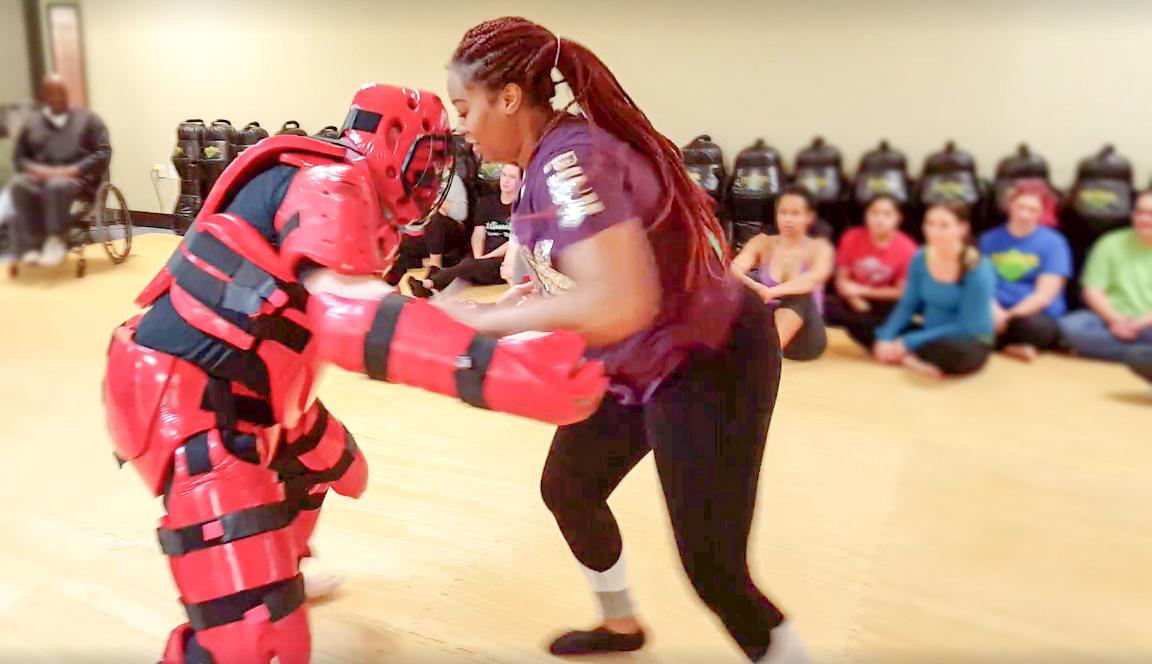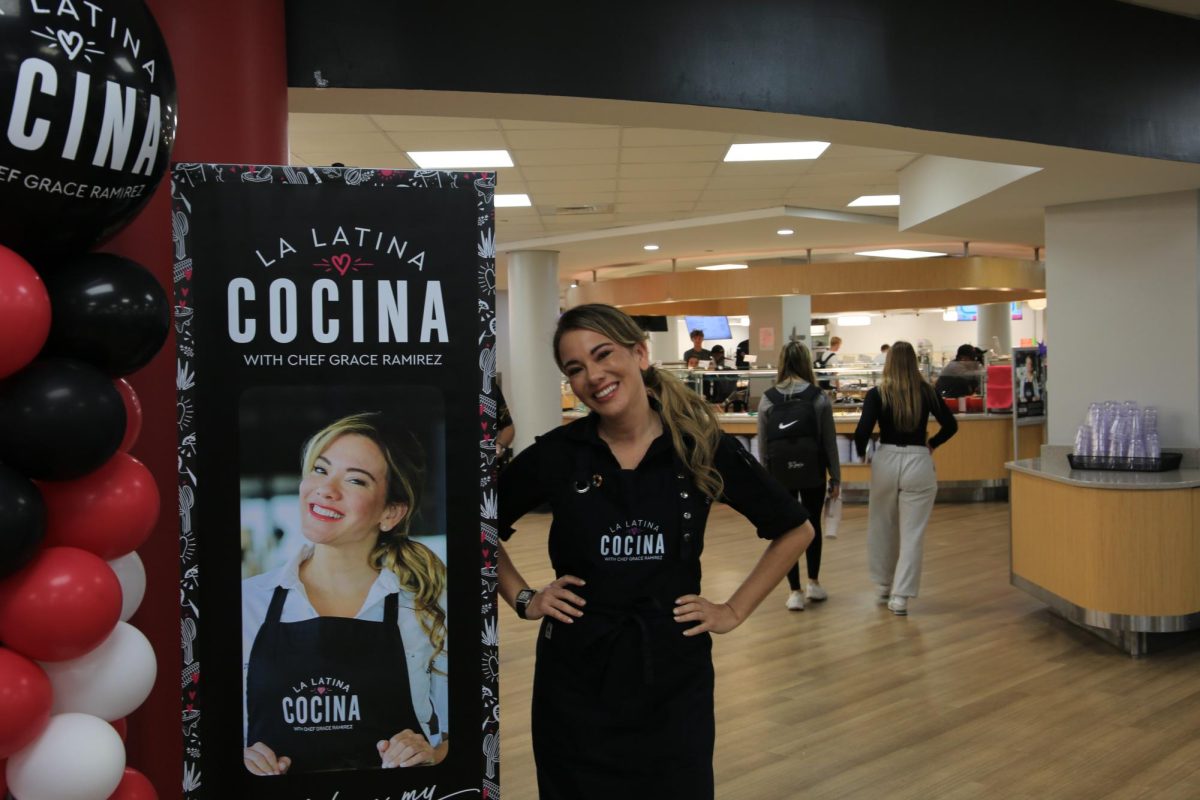Lessons learned in a women’s self-defense class
“Balls, balls, balls! You’re gonna hear that from me a lot today—you have to hit where you know it’s going to hurt,” said Dave Pantano, the owner and head instructor at Premier Martial Arts (PMA). “That means you go for the nose, the eyes, and?”
“Uh—balls, balls, balls?” I said.
He smiled. “You’re learning already.”
Pantano was calling the shots at the head of the room, while sporting a knee brace and a single crutch that he used to limp up and down the floor of the studio when he wasn’t demonstrating the proper method of bringing a knee sharply into the groin of an attacker.
At Premier Martial Arts (PMA), a martial arts studio in Huntingdon Valley, Pa., Pantano leads classes in karate and kickboxing, in addition to the occasional specialized workshop for interests like weapons defense and kidnapping prevention.
In mid-February, the studio offered a free women’s self-defense seminar for training in situational awareness and basic strikes and kicks. I showed up to put my fighting skills to the test.
Pantano, along with fellow instructor Julian Vega, told me and the other 20 or so women in the room that we might only have one opportunity to stop an attack, so we should go for the most painful point and get away.
This is a prime tenet of Krav Maga, an Israeli form of self-defense designed for use in close-quarter, potentially life-threatening situations. The goal of this kind of training, according to Pantano, is not simply fighting, but neutralizing attacks and using counterattacks to create opportunities for a quick and safe escape.
This method lends itself to women’s self-defense because it offers protection against chokeholds, grabs and bear-hugs, which are common attacks against women.
Our first lesson involved learning to block grabs by meeting our partners’ arms perpendicularly to form a plus sign with our own. The idea, Pantano explained, is to practice keeping a safe distance between us and an attacker and to feel comfortable enforcing our personal boundaries.
After getting the hang of basic blocks, we moved into more partner work. One woman held up a foam pad, while the other unleashed a storm of punches and blows. The fighting partner alternated doing push-ups or holding a plank pose between rounds of punching to simulate the adrenaline dump and muscle fatigue you might experience in a real-life scenario.
“Think about how a real situation would be so much more stressful,” Vega said. “If you’re in fear and you freeze, or you start to get too tired, it may be too late. It’s all about training your body and mind to act from a place of power instead of weakness and paranoia.”
The situation got more real once Vega emerged in what he called the “Red Man Suit,” a foam padded uniform and full face and head mask that seemed to combine the protection of baseball catcher’s gear with the look of a Rock’em Sock’em Robot suit.
We took turns beating the crap out of him.
First to go was a woman who trains regularly at PMA. Watching her attack was like witnessing the explosion of the world’s most disciplined firecracker. She delivered one rapid, controlled blow after another, punctuating each with a fierce yell.
When it was my turn, I struggled to hit hard enough and was tempted to apologize every time I did. Pausing too long between strikes, I attempt to match the conviction of those who managed to fight as if their lives depended on it, but don’t quite get there.
I tried conjuring up the experience of really being attacked, expecting that something might kick in to make me fight harder if I pretended it was life or death. But it was almost too sobering to realize that so many women have had to actually employ this mindset. Maybe even some women in this room.
One in three women worldwide have experienced either physical and/or sexual violence in her lifetime, according to estimates published by the World Health Organization.
This reality has inspired women to seek out safety and defense strategies in classes like this. University settings, in particular, are beginning to see growing interest from women looking to feel safer on their college campuses and surrounding areas.
Saint Joseph’s University has already been home to seminars and workshops that offer lessons in personal safety and defense.
Alpha Omicron Pi president Brielle Droste, ’18, organized an hour-long self-defense class for a sisterhood retreat last fall, where about 100 of the sorority’s members gathered in Campion Banquet Hall to practice defense moves and discuss sexual violence and bystander intervention with several speakers.
Even now, Droste said she is approached by members who were abroad for the fall semester inquiring about plans for another class.
The Student Union Board (SUB) will offer a self-defense seminar event on April 25 that promises to teach students how to feel more confident about their personal safety.
“It’s really something that students seem excited about,” said Lydia Sandri, ’18, president of SUB. “There has been a ton of interest so far from people who hear about the event. I think people on this campus are looking for ways they can feel safer or at least more aware of their surroundings.”
This lesson in awareness and self-confidence was not overlooked in my time at PMA. After two hours of drilling through more rounds of blocks, elbow blows and eye-gouging techniques, we all gathered around the mat to discuss additional takeaways from the class.
The instructors stressed that there’s more to self-defense than attacks and counterattacks. It’s just as critical to be able to anticipate potential dangers and remain composed after the initial shock of a violent encounter.
Lessons like these are important because they don’t require extra classes for mastery, and can be useful at any level or situation. The instructors reminded us it’s not necessarily the goal of the class to leave able to perform each defense flawlessly.
“Even if you go out there and you don’t know everything exactly—even if you can only remember one move, you’re gonna have some kind of frame of reference for how to respond,” Pantano said. “It’s important to be ready for that.”
Vega also assured us that, performance aside, we were already making important steps in preparing ourselves for what’s out there simply by attending the class.
“What I really love is to see is how proactive you guys are,” Vega said, addressing the class. “You [coming in for a lesson] here is already doing a lot more than some other people will do. Just by being here, you’re doing something in the right direction.”
I thought about this as I went home. The thing about doing something for yourself, I realized, even if it’s only a small move like performing a simple elbow strike or bothering to show up for one free class—is that as long as you commit, some kind of action is always better than nothing.
At least for me, taking this class has encouraged me to think about my own agency and the ways I can take command of my own space. I might not be a skilled fighter, but I have a right to protect myself—whether that means being more assertive about personal boundaries, or simply carrying myself to communicate the message that I won’t be messed with.

















































